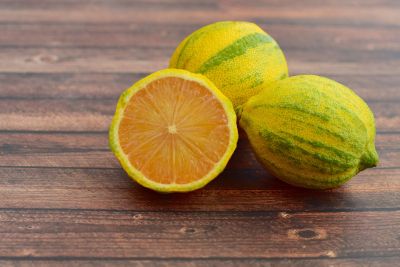What is a Eureka Pink Lemon Tree?
Variegated pink Eureka lemon is an ornamental treasure, both for its foliage and its fruit. The flesh of the lemon looks like a pink grapefruit; however, it doesn’t yield pink juice. The juice is clear with the ghost of pink in it and has an amazingly mild flavor. You could almost eat one of these fruits out of hand without excessive puckering. The variegated pink Eureka lemon tree is a medium sized citrus that translates well to container growing. It is suitable for gardeners in USDA zones 8 through 11 and was discovered around 1930. Northern gardeners can grow it in a container on casters and move it inside for winter. The leaves are striped with cream and soft green, while the fruit has classic yellow skin but bearing stripes of green vertically at intervals. Cut one of the fruits open and a gentle pink flesh meets the eye. Older fruits lose the striping, so it’s best to harvest the fruit while young.
How to Grow Variegated Pink Lemon
The variegated pink Eureka lemon tree practically grows itself! Start with rich, loose soil that drains well in a site that will get at least eight hours of sunshine daily. Trees are sold at two to three years of age. If you wish to plant in a container, choose one that is at least 16 inches (41 cm.) wide. Incorporating small to medium bark helps increase drainage. For in-ground plants, loosen soil to twice the depth and width of the root ball. Back fill with just enough loose dirt so the plant sits even with the soil. Tease out the roots gently and set the plant in the hole, backfilling around the roots. Water in well. Keep well-watered as the plant adapts.
Variegated Pink Lemon Care
You should prune the pink Eureka every year. In the first years, prune to retain five to six stout bearing limbs. Remove smaller growth on the interior to promote air flow. Remove dead and diseased plant material immediately. Watch for pests and use appropriate treatments. Feed the plant in late winter to early spring with a citrus specific fertilizer. Water the plant weekly, or more in extreme heat. Harvest fruits when stripy and tangy or wait until the stripes disappear and reap a more mellow lemon. This is a very attractive and adaptable tree that will add ornamental interest to your landscape and your kitchen.
